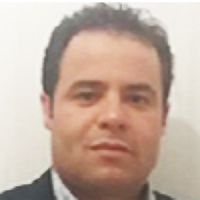Intelligent Design of Ecological Furniture in Risk Areas based on Artificial Simulation
Published on: 5th August, 2024
The study is based on the characterization of different AI models applied in the public furniture design analyzing the conditions of risk, materiality, and integration of variables in two AI generative modeling algorithms. As risky since they contain flood-prone areas, low vegetation coverage, and underdevelopment of infrastructure; therefore, these characterizations are tested through artificial simulation. The experimental method is applied through laboratory tests of various material components and their structuring in 3D simulators to check their resistance and risk scenarios. The case study of one of the most risky and populated areas of the informal settlement area of the Northwest of Guayaquil, such as the Coop, is analyzed. Sergio Toral is the focal point for on-site testing. It is concluded that the generation of a planned scheme of ecological furniture with different materials responds more effectively to the territory and that through artificial simulation an advantage can be obtained in terms of execution time and results, thus demonstrating that artificial intelligence is an ideal tool. To generate furniture design proposals that are more diverse, innovative, and functional with the environment, but it generates a minimum level of error for specific designs in the experimental model_01 of 0.1% to 3% and a high level in the experimental model_02 with an increasing error from 20% to 70%. As a future line of research, it is proposed to generate a simulated system of all the new informal settlements in Guayaquil and establish focal points for the implementation of new ecological furniture.
Advancements in Clinical Research: Phases, Ethical Considerations, and Technological Innovations
Published on: 25th September, 2024
Background: Clinical research is a vital component of medical advancements, contributing to the discovery of new treatments, procedures, and health interventions. This paper discusses the importance of clinical trials, the structure and phases of trials, ethical considerations in research, and the role of modern technologies in reshaping clinical trials.Objective: This article aims to provide a comprehensive overview of the clinical trial process, ethical compliance, and the integration of technological advancements, with real-world examples and recent studies to support the discussion.Methods: The article provides a descriptive analysis of the different types of clinical research, the various phases of clinical trials, and ethical considerations based on established guidelines such as the Declaration of Helsinki and the Belmont Report. It also examines how recent technological innovations, including AI, wearable devices, and Electronic Health Records (EHRs), have revolutionized the field.Results: The integration of technology into clinical research has resulted in more efficient, data-driven, and patient-centric trials. Ethical compliance, guided by international regulations, remains a critical factor in ensuring patient safety and maintaining public trust in clinical research.Conclusion: The future of clinical research relies heavily on technological innovation and strict adherence to ethical guidelines. As new treatments and therapies emerge, the structure of trials and the responsible use of technology will play an essential role in shaping the future of healthcare.
Efficiency of Artificial Intelligence for Interpretation of Chest Radiograms in the Republic of Tajikistan
Published on: 25th November, 2024
The article presents data from recent publications and own data on screening studies with interpretation of chest radiographs using artificial intelligence CAD (Computer-Assisted Diagnosis), which, according to WHO recommendations, provides more accurate clinical thresholds for deciding who needs to take a sputum test. Another aspect of the WHO recommendations is the cost-effectiveness of CAD as a tool for triaging patients with tuberculosis symptoms in low-income countries with a high incidence of tuberculosis. Compared with smear microscopy and GeneXpert, without preliminary sorting, the use of mobile digital X-ray machines equipped with a CAD tool reduces costs, allowing sorting of individuals suspected of having tuberculosis for testing on GeneXpert, while reducing the time to start tuberculosis treatment.Thus, conducting a study using portable X-ray machines using a CAD program is a low-cost and easy-to-implement method, does not require large funds, does not require separate rooms, is highly effective, has good image quality, allows you to quickly clarify individuals suspected of having tuberculosis, differentiating it from other pathological changes in the lungs.Our experience shows that machine analysis of chest computed tomography data, due to the higher resolution capabilities of the method and the absence of fundamental disadvantages of radiography, including the effect of shadow summation, the presence of “blind” zones, etc., is finding increasing application in both diagnostics and screening of respiratory diseases. Our use of this tool allowed us to identify additional new cases of phthisio-onco-pulmonary diseases in field conditions.
KYAMOS Software - Mini Review on the Computer-Aided Engineering Industry
Published on: 28th January, 2025
This review underscores the transformative impact of Computer-Aided Engineering (CAE) on modern engineering, emphasizing its role in advancing sustainable and efficient technological solutions. The CAE industry is further analyzed, focusing on market trends and future directions. The CAE market is projected to grow significantly in the next five years in industries like automotive, aerospace, and energy, especially with the rapid advancements in High-Performance Computing (HPC), Artificial Intelligence (AI), Internet of Things (IoT), and Digital Twin technologies that enhance real-time optimization and predictive capabilities, thus fostering innovation in sustainable product design and performance. Lastly, this review presents KYAMOS Software and its state-of-the-art CAE solutions for tackling high-demand engineering problems, mainly concerning green technologies.
Feature Processing Methods: Recent Advances and Future Trends
Published on: 23rd March, 2025
This paper reviews recent advances and future trends in feature processing methods within the field of artificial intelligence. With the rapid development of deep learning and big data technologies, feature processing has become essential for enhancing AI model performance. We begin by revisiting traditional feature processing methods, then focus on deep learning-based feature extraction techniques, automated feature engineering, and the application of feature processing in specific domains. The article also analyzes the current research challenges and outlines future development directions, offering structured insights for both researchers and practitioners across disciplines
Advancing Forensic Approaches to Human Trafficking: The Role of Dental Identification
Published on: 4th April, 2025
Background: Human trafficking is a significant global issue that affects millions of individuals, where victim identification remains a major challenge. Traditional methods such as DNA or fingerprint analysis are not always viable, necessitating alternative forensic approaches.Methods: This article reviews the role of dental identification in human trafficking cases through an extensive analysis of existing literature. The study incorporates forensic odontology techniques, including dental charting, radiographic analysis, bite mark analysis, age estimation, and emerging technologies like Artificial Intelligence (AI).Results: Findings indicate that dental identification methods are essential for victim identification, especially when conventional methods prove ineffective. AI integration enhances the accuracy and efficiency of dental forensic investigations, addressing challenges such as record access and cross-border complexities.Conclusion: Dental identification, augmented by AI advancements, is an indispensable tool in forensic investigations related to human trafficking. The study underscores the necessity of international collaboration and technological innovation to enhance forensic practices.
















